Coffey Architects redesigns an apartment in a former school house in London
Timber tricks and decluttering techniques characterise this clever Clerkenwell conversion
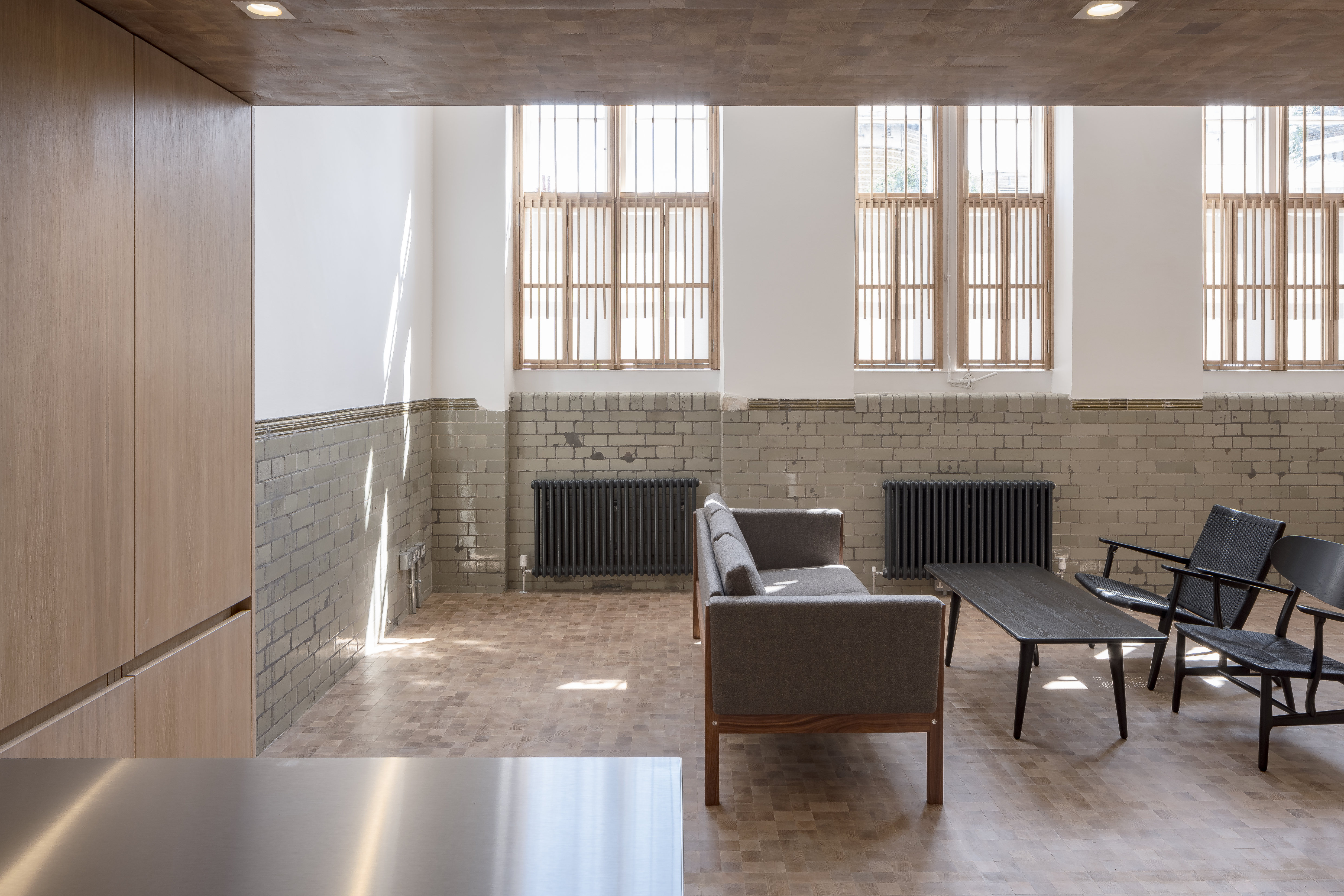
Coffey Architects has redesigned an apartment housed within a 19th century former school house in Clerkenwell. The approach was to insert a piece of ‘inhabited joinery’ into the apartment in one of the old classrooms with ceiling heights reaching over four metres and plenty of original character. The sculptural intervention is contemporary, yet its simplicity draws the eye to the newly revealed architectural detailing of the historical building.
Located on a pleasant campus of trees and gardens in the midst of Clerkenwell Conservation Area, the Grade II-listed school-house was built in 1892 by TJ Bailey and converted to residential and commercial use in 2000. The conversion of the classroom into a two-storey home with a mezzanine level, had left a cramped and dark space, prone to collecting clutter.
Coffey stepped in to open up the space, introducing some much-needed light. The architects stripped back anything in the way of the original architecture, cut back the existing mezzanine level to create a double-height living space, and relocated the staircase to the side of the plan. New voids of space were revealed that were ripe with potential.
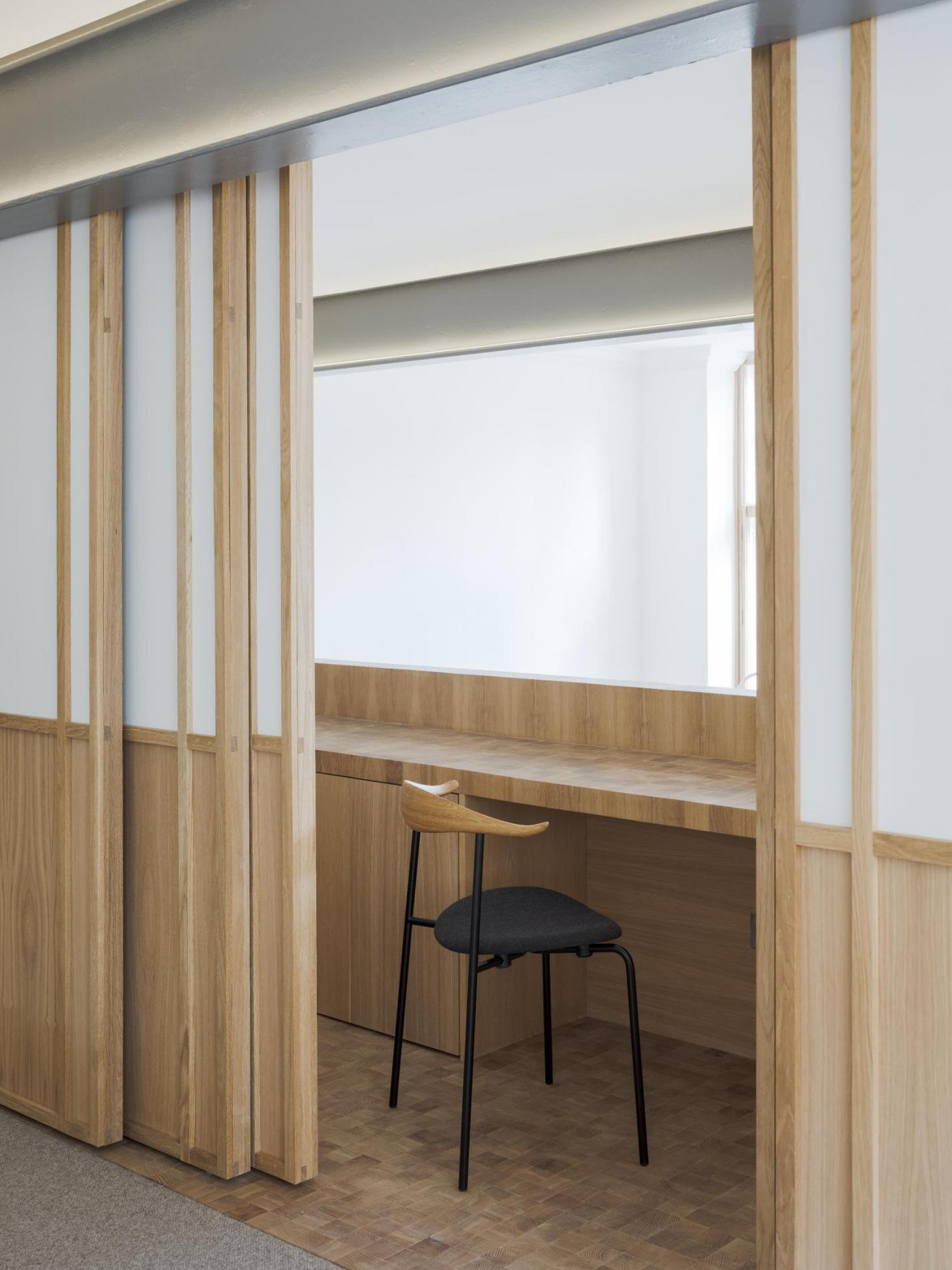
A process of replanning, redesigning and resculpting began. The small kitchen is tucked beneath the mezzanine. Lightly striped oak timber joinery lines the walls and hides neat storage spaces behind it. While sliding timber pocket doors conveniently reveal and conceal the snug downstairs and the bedroom upstairs.
Reached by the gracefully processing European oak staircase, the upper level is lit by the three metre high sash windows, framed by timber shutters lined with linen reminiscent of Japanese screens. At the top of the stairs a slim study area stretches out before the bedroom.
RELATED STORY
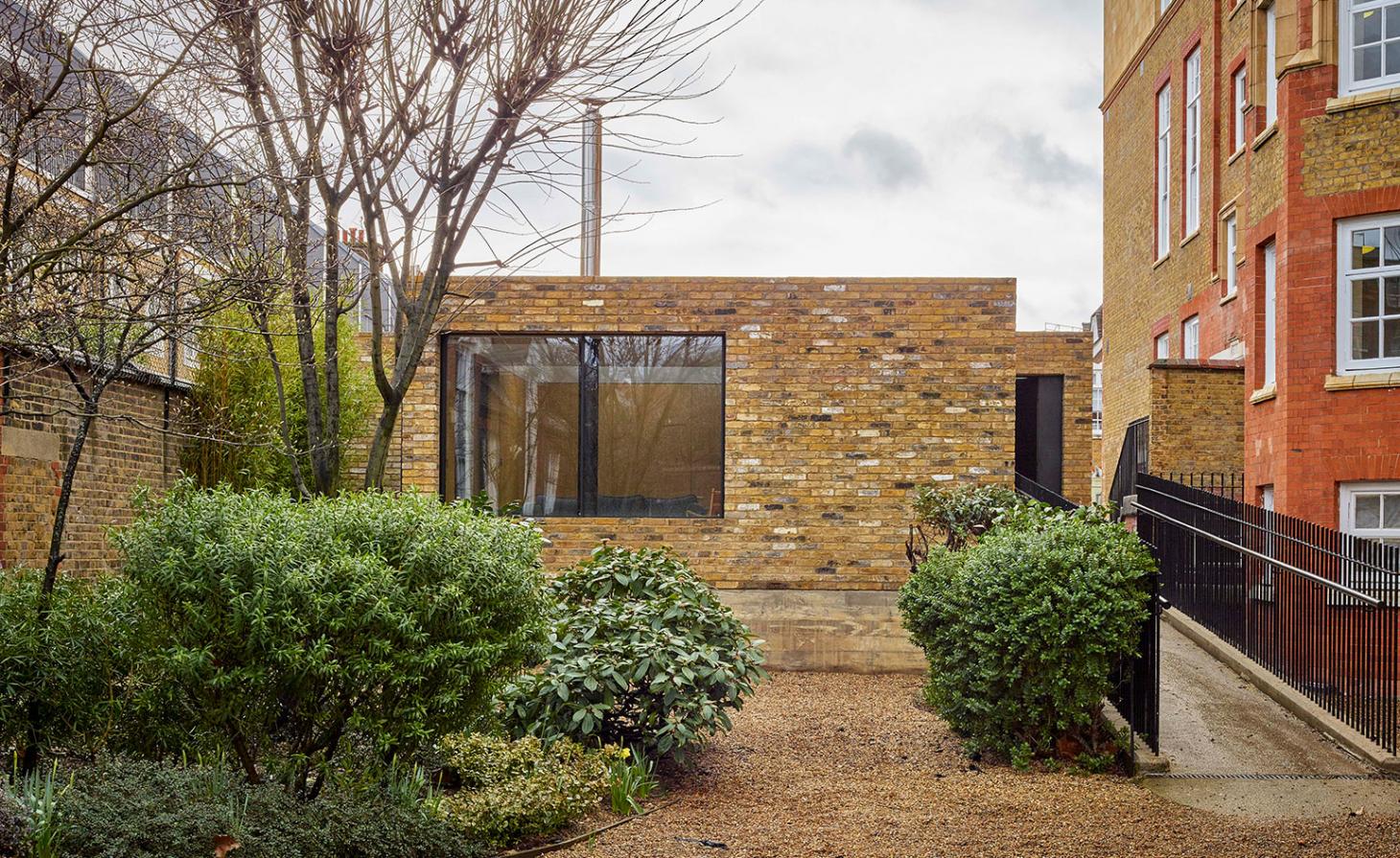
The highly efficient tight-knit plan, kitted out with sliding elements, is reminiscent of the clever formation of Hidden House, a RIBA-award winning house on the same campus, which involved similar timber tricks.
Coffey were keen to work again with contractor Ed Mcbeath of Woods London and joinery subcontractor James Wilkie, who they had worked with on Hidden House. Taking the opportunity to do something slightly different, they decided to line the floors, ceiling of the mezzanine level and craft a bespoke desk and dresser with 30,000 individually cut and laid cross-section blocks of European oak.
A new challenge for Woods London, the intensive technique was a labour of love, and the blocks were all hand-cut on site and carefully arranged at alternating angles in a random pattern. The end grain effect of the cubes creates a textured, yet smooth and hard-wearing finish reminiscent of the parquet flooring seen in archive photographs of the school.
Project architect Ella Wright wanted to show a clear definition between old and new, yet celebrate both at once. Original cornicing and green glazed bricks have been rediscovered and restored – and, an old penny dated 1900 found beneath the flooring was another wonderful discovery along the way.
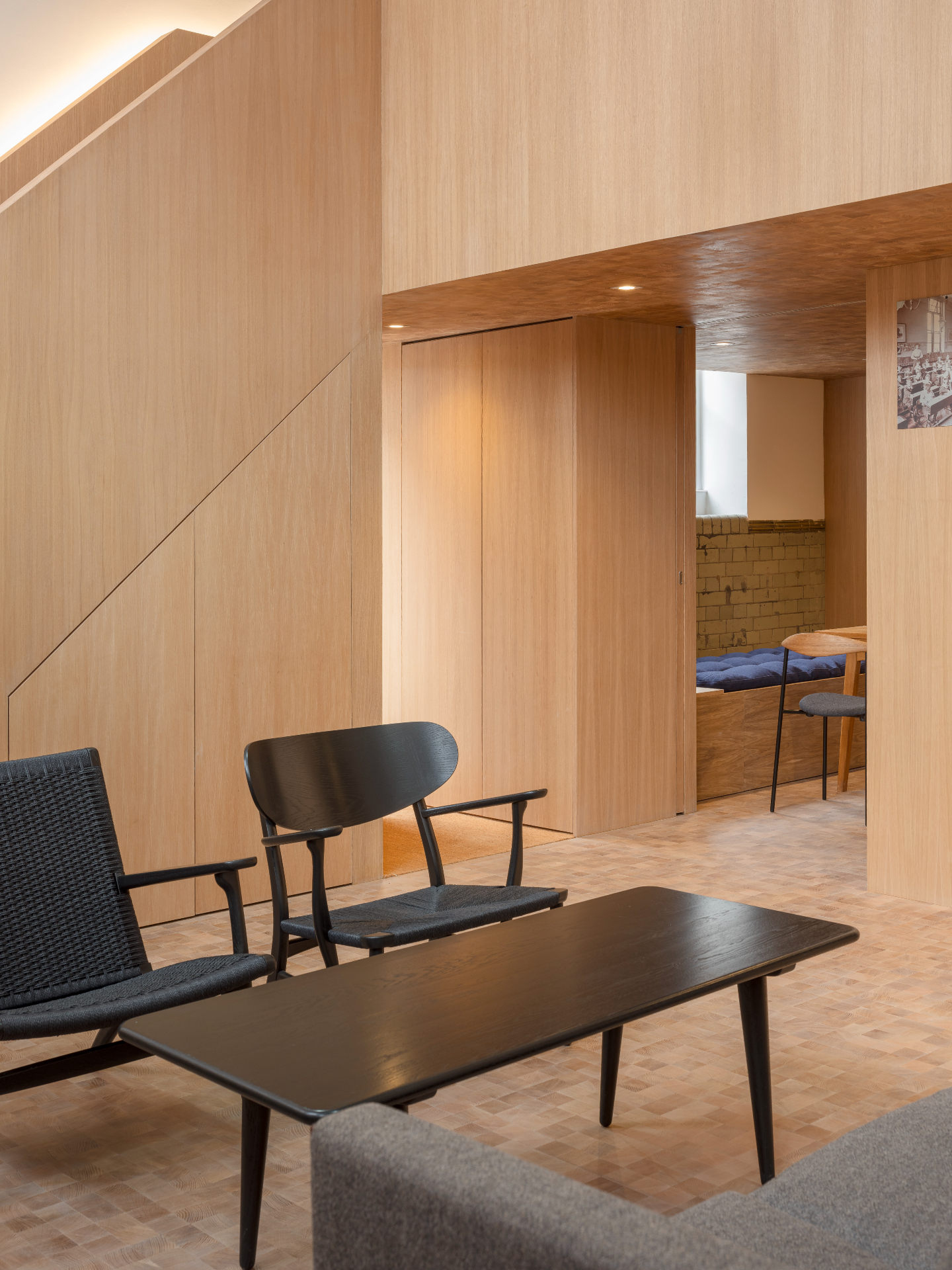
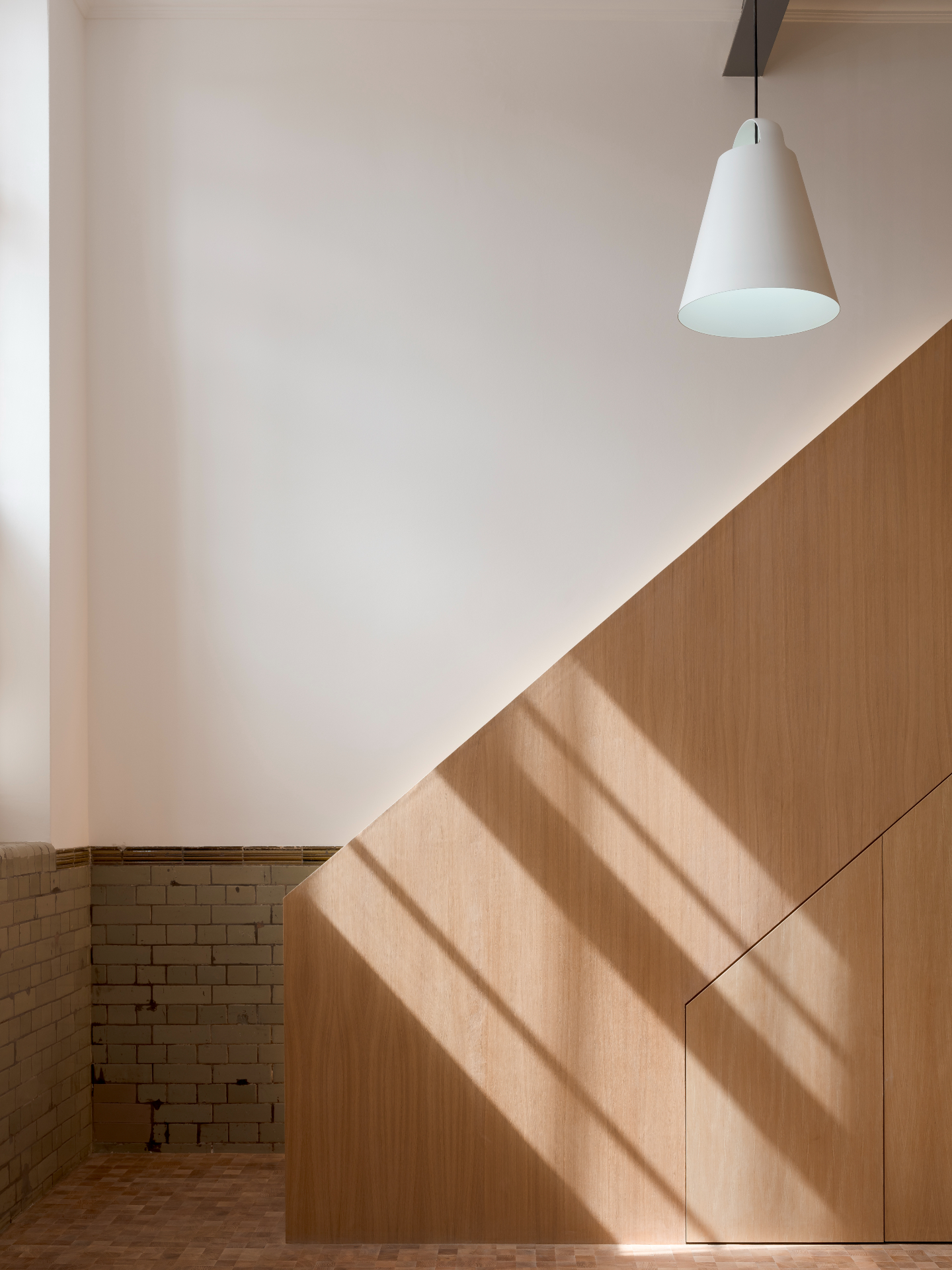
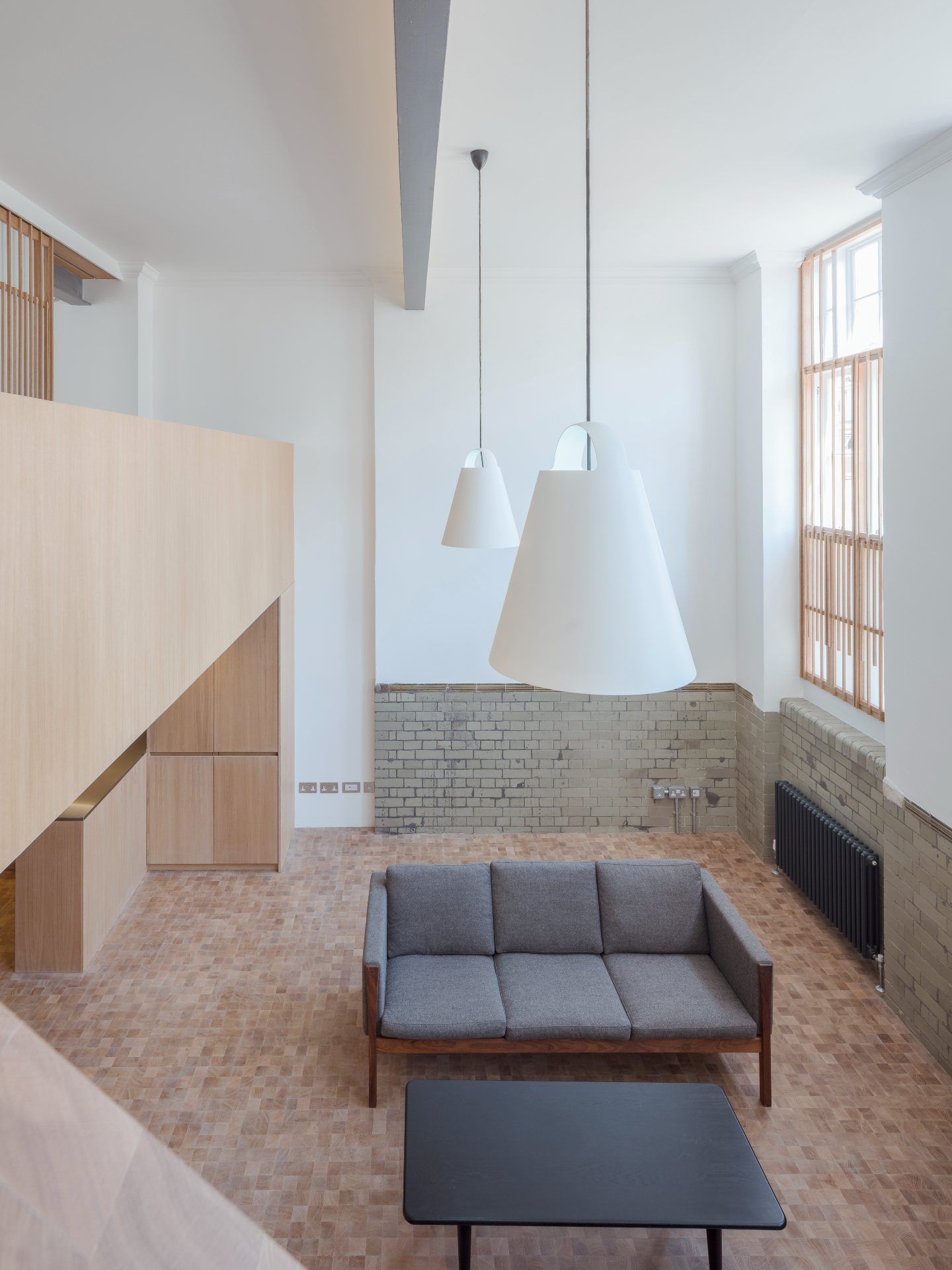
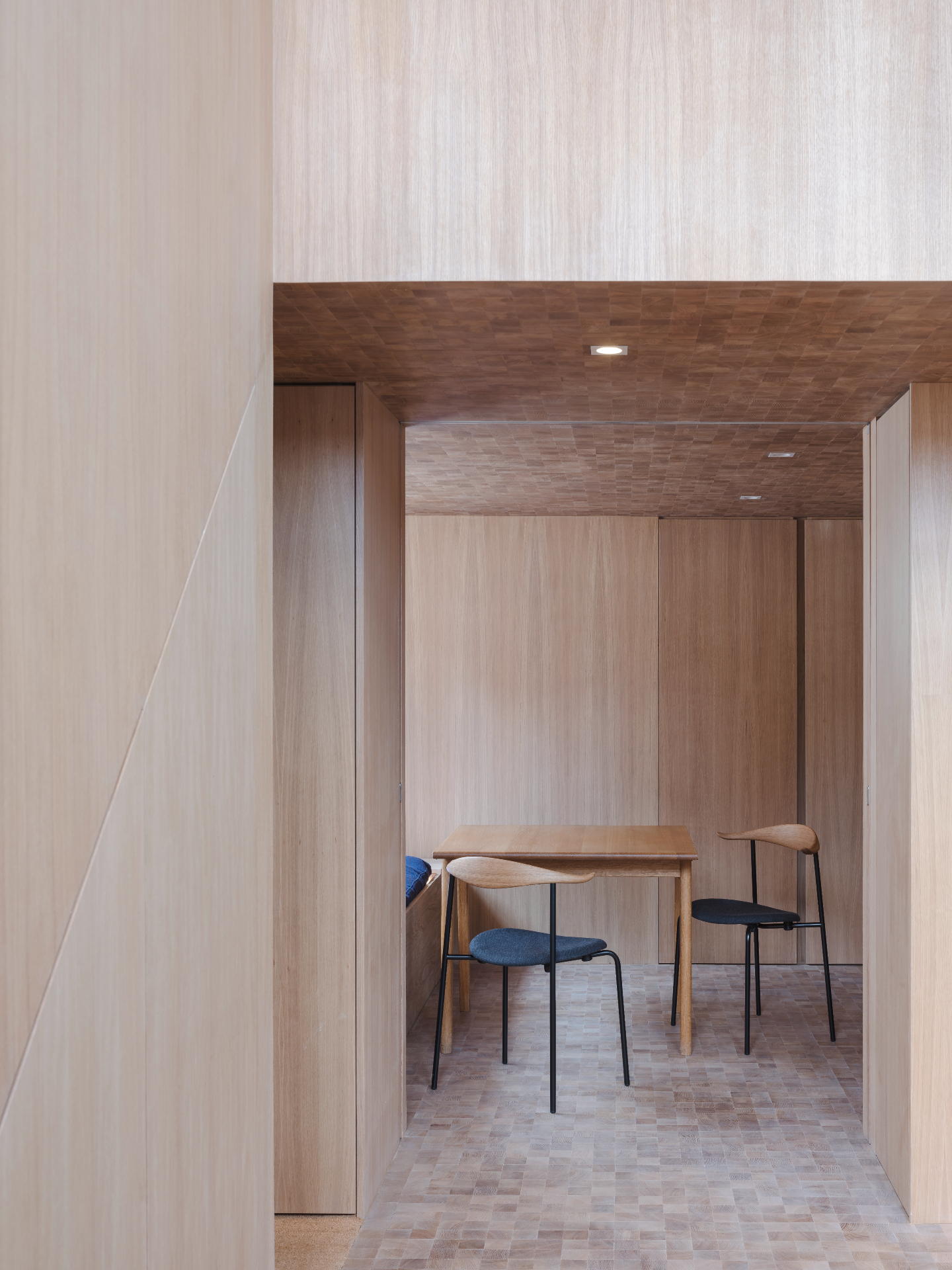
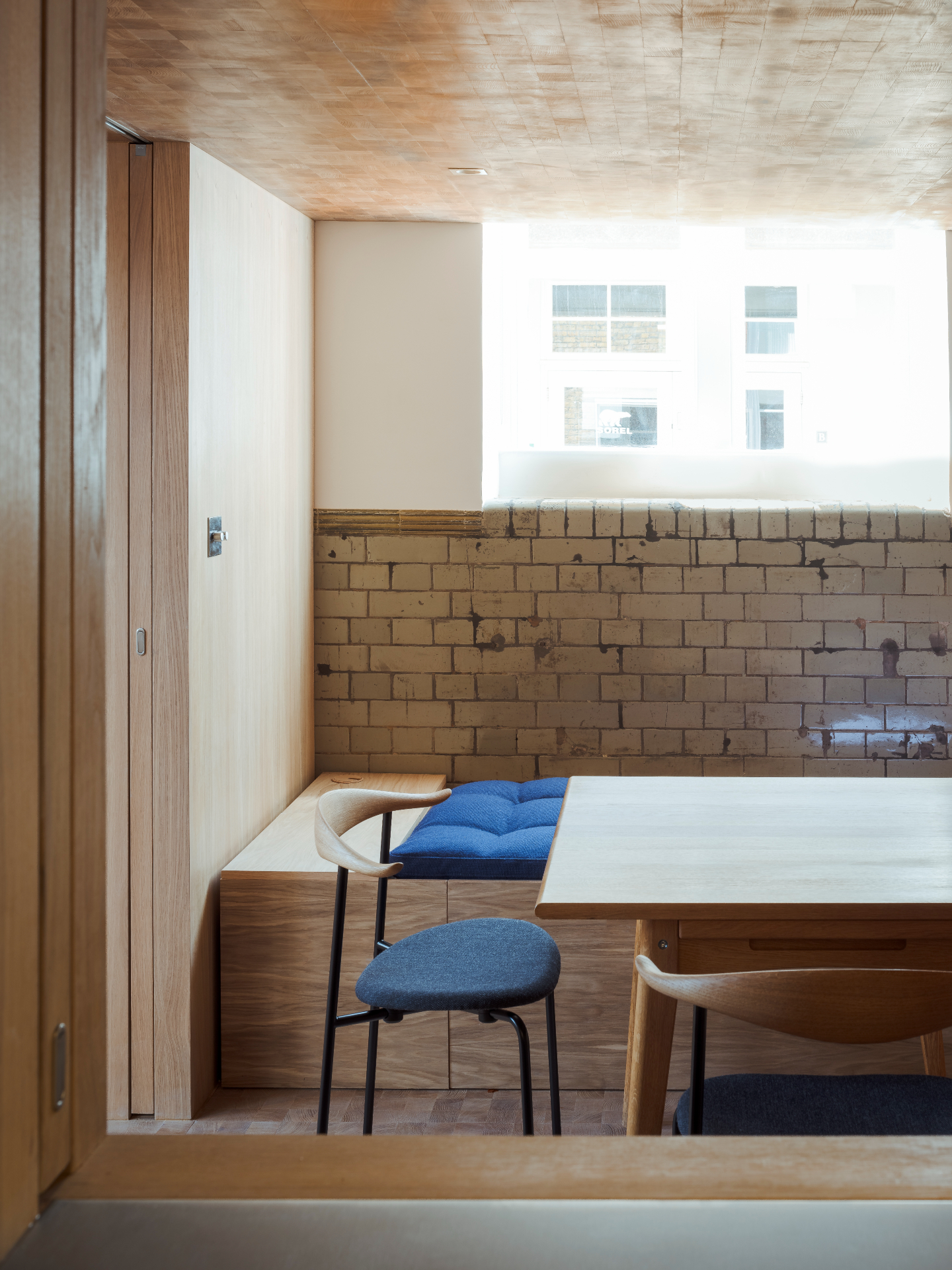
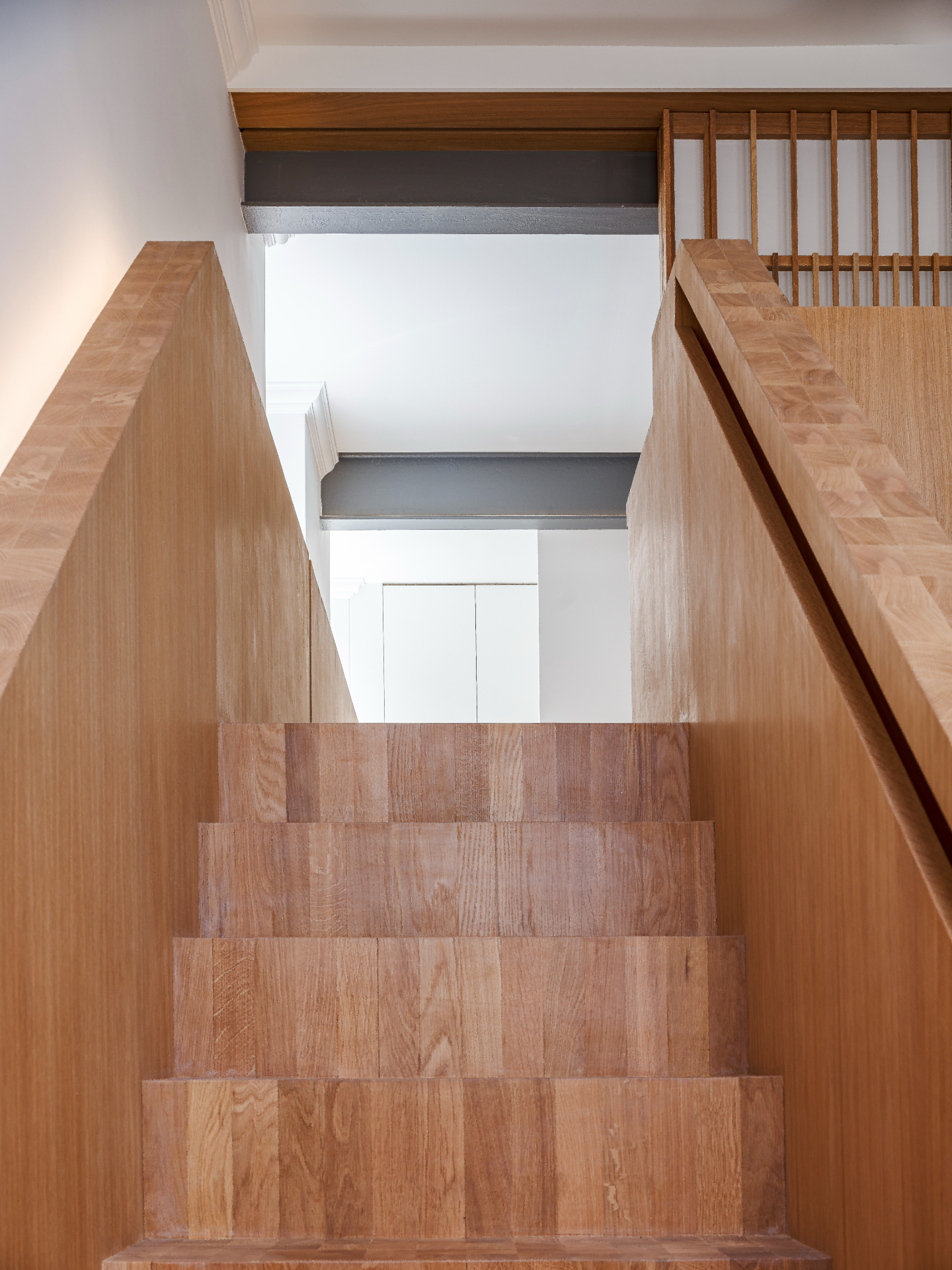
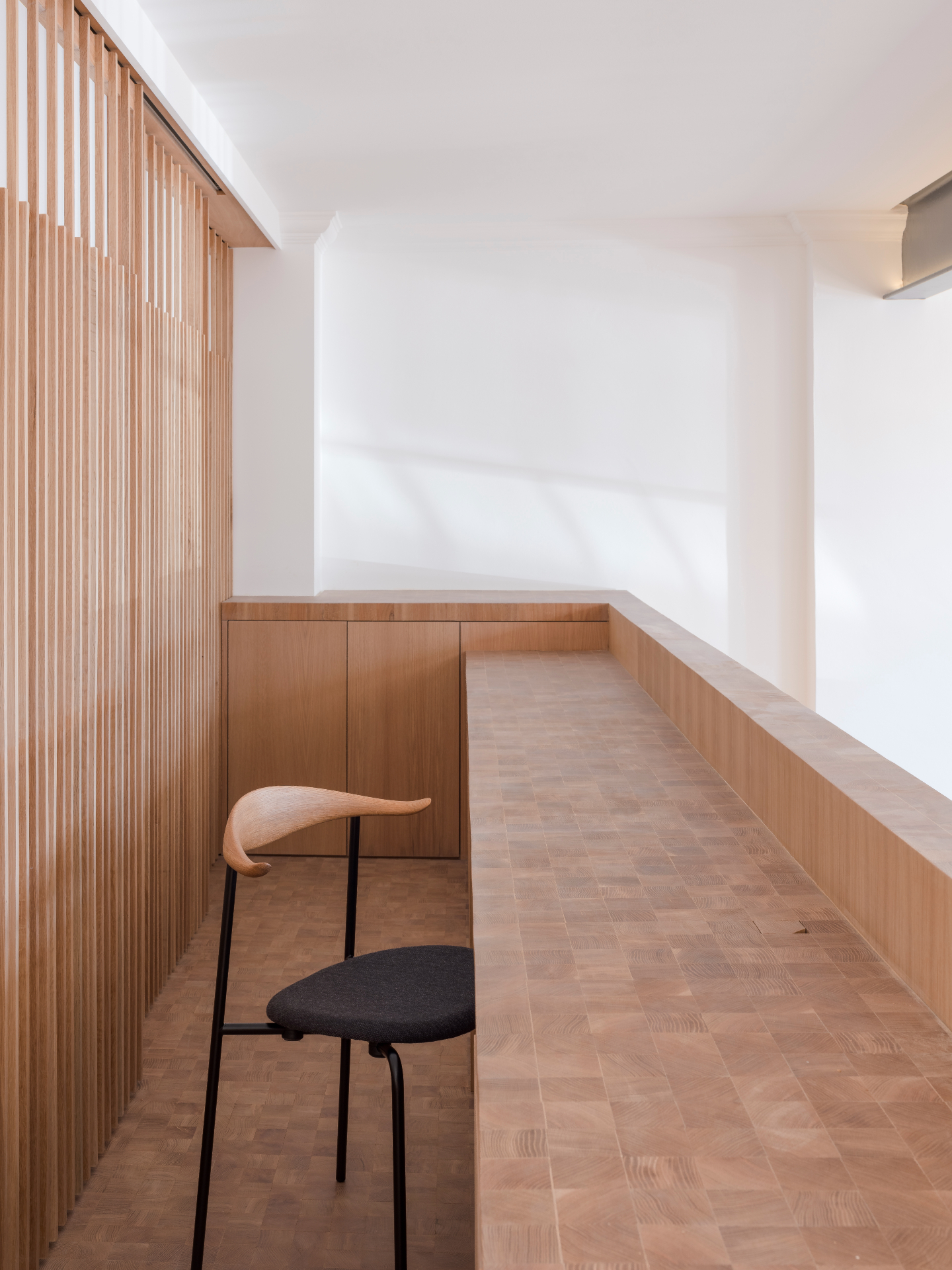
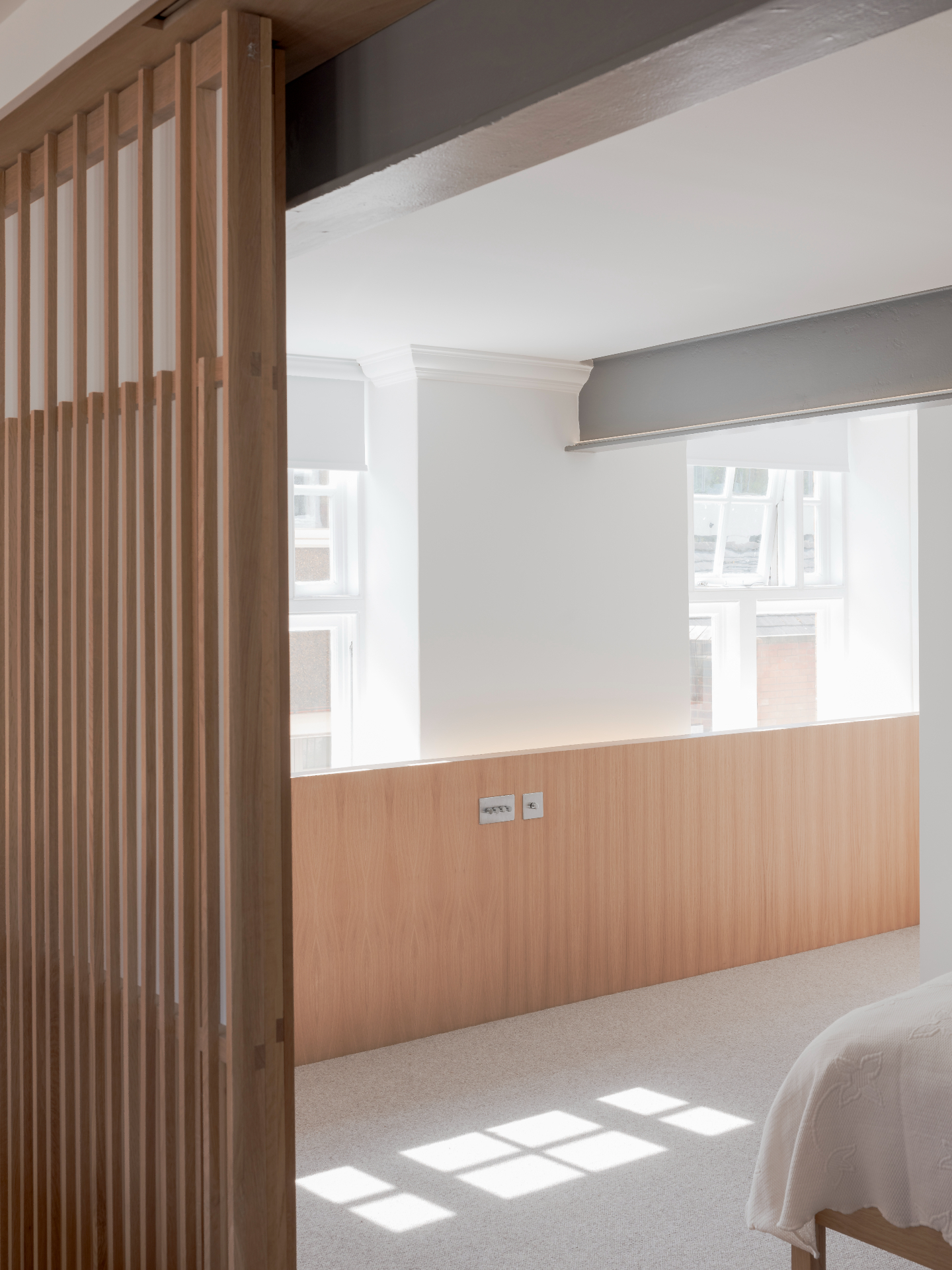
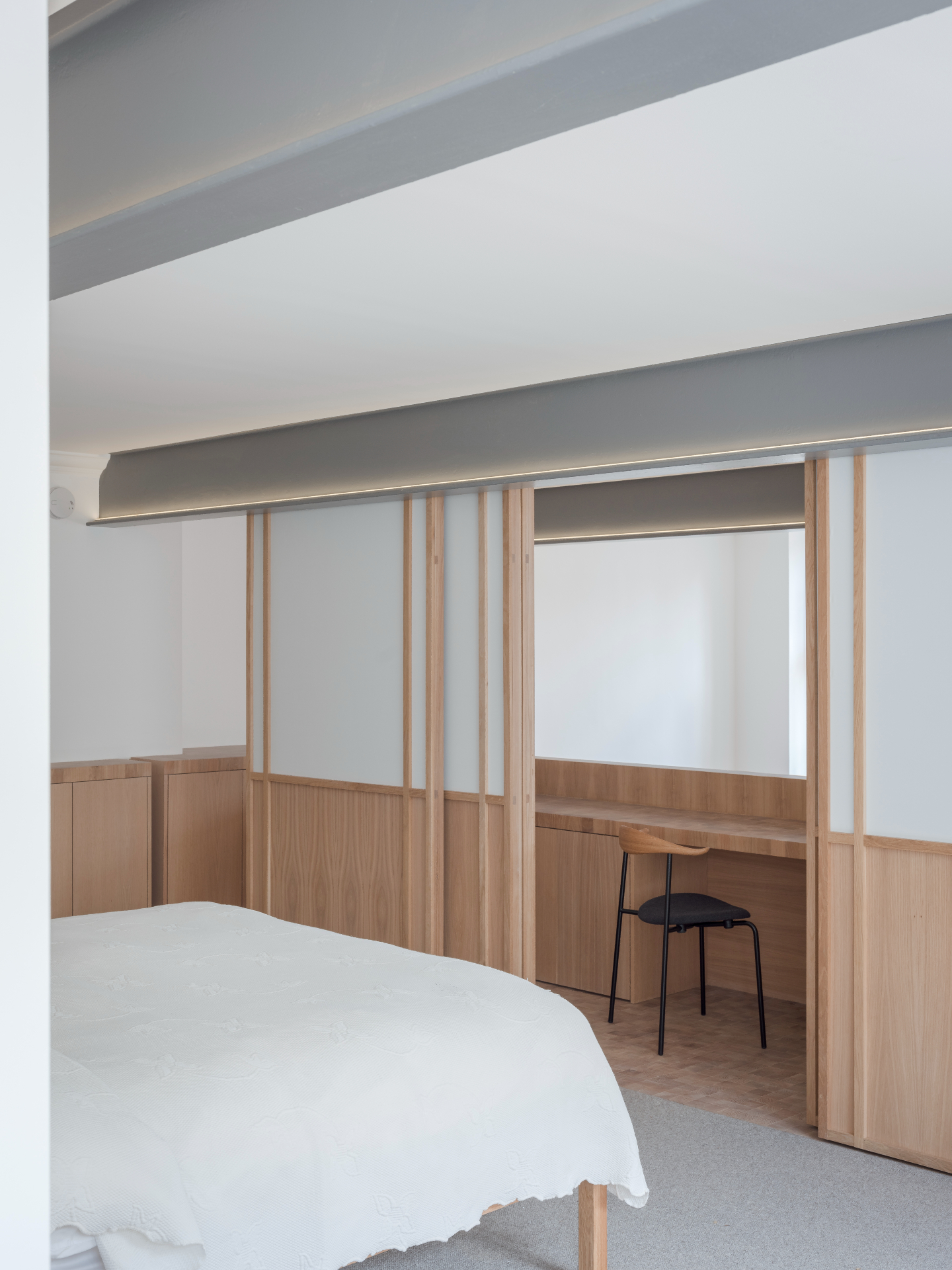
INFORMATION
Wallpaper* Newsletter
Receive our daily digest of inspiration, escapism and design stories from around the world direct to your inbox.
Harriet Thorpe is a writer, journalist and editor covering architecture, design and culture, with particular interest in sustainability, 20th-century architecture and community. After studying History of Art at the School of Oriental and African Studies (SOAS) and Journalism at City University in London, she developed her interest in architecture working at Wallpaper* magazine and today contributes to Wallpaper*, The World of Interiors and Icon magazine, amongst other titles. She is author of The Sustainable City (2022, Hoxton Mini Press), a book about sustainable architecture in London, and the Modern Cambridge Map (2023, Blue Crow Media), a map of 20th-century architecture in Cambridge, the city where she grew up.
-
 ‘Humour is foundational’: artist Ella Kruglyanskaya on painting as a ‘highly questionable’ pursuit
‘Humour is foundational’: artist Ella Kruglyanskaya on painting as a ‘highly questionable’ pursuitElla Kruglyanskaya’s exhibition, ‘Shadows’ at Thomas Dane Gallery, is the first in a series of three this year, with openings in Basel and New York to follow
By Hannah Silver
-
 Australian bathhouse ‘About Time’ bridges softness and brutalism
Australian bathhouse ‘About Time’ bridges softness and brutalism‘About Time’, an Australian bathhouse designed by Goss Studio, balances brutalist architecture and the softness of natural patina in a Japanese-inspired wellness hub
By Ellie Stathaki
-
 Marylebone restaurant Nina turns up the volume on Italian dining
Marylebone restaurant Nina turns up the volume on Italian diningAt Nina, don’t expect a view of the Amalfi Coast. Do expect pasta, leopard print and industrial chic
By Sofia de la Cruz
-
 This 19th-century Hampstead house has a raw concrete staircase at its heart
This 19th-century Hampstead house has a raw concrete staircase at its heartThis Hampstead house, designed by Pinzauer and titled Maresfield Gardens, is a London home blending new design and traditional details
By Tianna Williams
-
 An octogenarian’s north London home is bold with utilitarian authenticity
An octogenarian’s north London home is bold with utilitarian authenticityWoodbury residence is a north London home by Of Architecture, inspired by 20th-century design and rooted in functionality
By Tianna Williams
-
 What is DeafSpace and how can it enhance architecture for everyone?
What is DeafSpace and how can it enhance architecture for everyone?DeafSpace learnings can help create profoundly sense-centric architecture; why shouldn't groundbreaking designs also be inclusive?
By Teshome Douglas-Campbell
-
 The dream of the flat-pack home continues with this elegant modular cabin design from Koto
The dream of the flat-pack home continues with this elegant modular cabin design from KotoThe Niwa modular cabin series by UK-based Koto architects offers a range of elegant retreats, designed for easy installation and a variety of uses
By Jonathan Bell
-
 Are Derwent London's new lounges the future of workspace?
Are Derwent London's new lounges the future of workspace?Property developer Derwent London’s new lounges – created for tenants of its offices – work harder to promote community and connection for their users
By Emily Wright
-
 Showing off its gargoyles and curves, The Gradel Quadrangles opens in Oxford
Showing off its gargoyles and curves, The Gradel Quadrangles opens in OxfordThe Gradel Quadrangles, designed by David Kohn Architects, brings a touch of playfulness to Oxford through a modern interpretation of historical architecture
By Shawn Adams
-
 A Norfolk bungalow has been transformed through a deft sculptural remodelling
A Norfolk bungalow has been transformed through a deft sculptural remodellingNorth Sea East Wood is the radical overhaul of a Norfolk bungalow, designed to open up the property to sea and garden views
By Jonathan Bell
-
 A new concrete extension opens up this Stoke Newington house to its garden
A new concrete extension opens up this Stoke Newington house to its gardenArchitects Bindloss Dawes' concrete extension has brought a considered material palette to this elegant Victorian family house
By Jonathan Bell